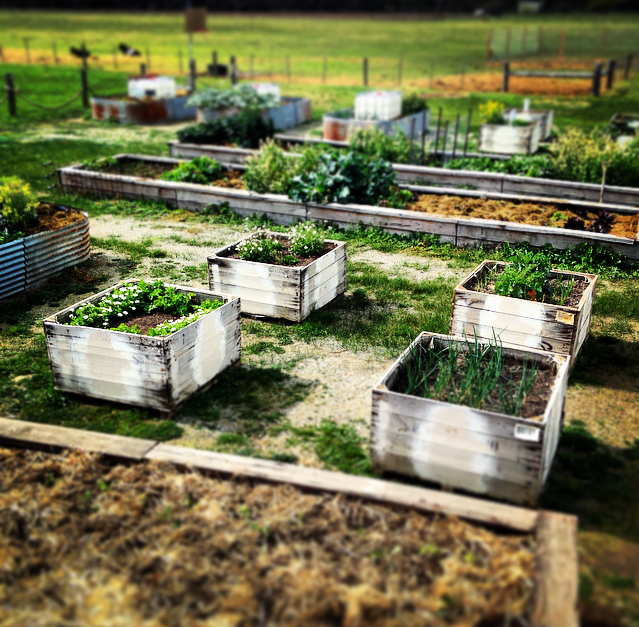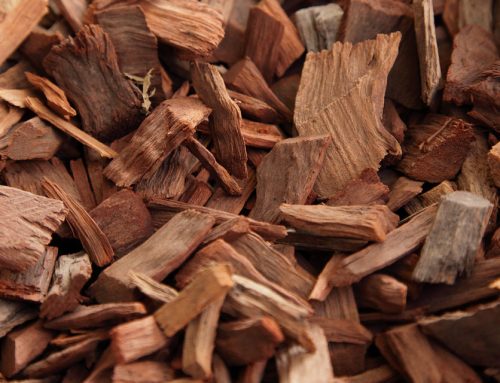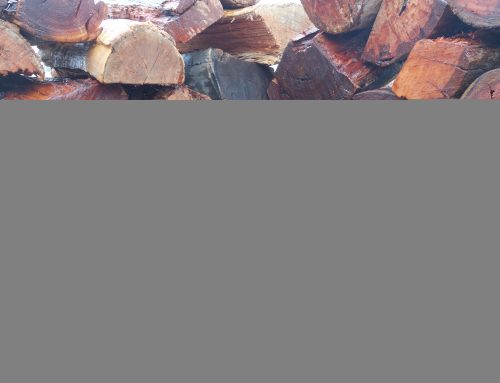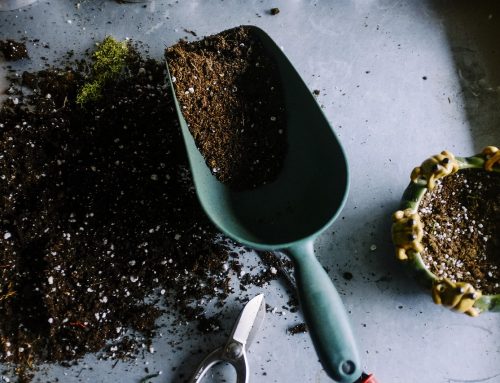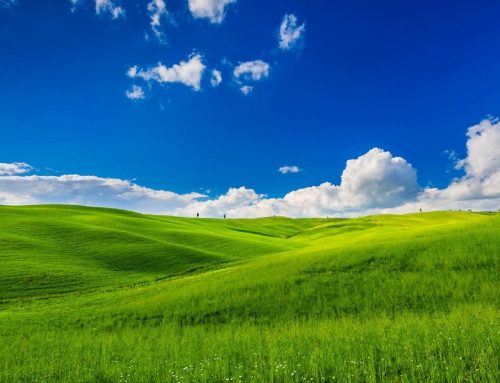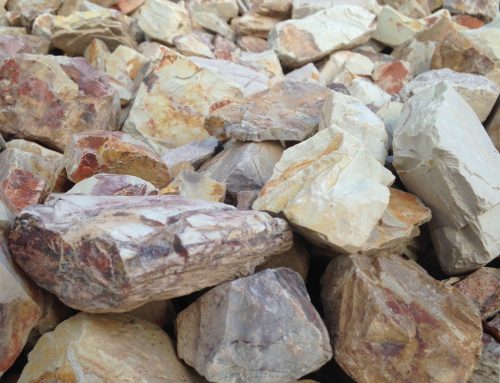Springtime is almost here, and it’s time to start preparing a garden bed for vegetables. The Farmer’s Place in Freshwater Creek has a beautiful garden already going (as pictured above), and is a great local example of some vegetable bed craftmanship. There are several construction designs you can choose from when building your own bed, and a variety of soils, composts and mulches that can help you grow healthy plants, save water and cut down on weeding time. Building a raised garden bed means you won’t have to bend over too far and the design can help keep can keep weeds out and water in. A raised bed also allows for loose, turned soil, which is ideal for the roots of young plants. This blog will focus on building the structure of the bed itself, and posts over the next few weeks will cover soil, composting and mulch.
Location
First select a location that will give your plants 6 hours or more of sunlight each day. Morning sun will be cooler than afternoon sun, so depending on the site you may need to use shadecloth on young seedlings or more sensitive plants.
Choose your garden design:
Easy Timber Sleepers Design
A simple garden bed can be made with 6 timber sleepers, either by laying them in place, screwing them to a 100mm square fence post, or securing them with starter bars, timber stakes or star pickets. The sleepers should be stacked two or three-high, with two full sleepers on each long side. Cut the sleepers in half for the ends so the garden is in a rectangle, which will allow you to lean over easily from the outside to pick your vegetables.
If you prefer natural, untreated wood our Ironbark sleepers are a good choice. Treated pine sleepers are resistant to rot, as are the recycled railway sleepers which come off the old rail lines in Western Australia. The railway sleepers also provide a rustic look and are thicker than the new sleepers. Thicker sleepers will be less likely to warp. We recommend either the 2.4metre x 100mm x 200mm ironbark or treated pine sleepers, or the 2.4m-2.7mx125mmx225mm railway sleepers.
Bessa Brick Beds
Bessa Bricks have naturally insulating properties, so can help keep the sun from scorching your veggies. They should be stacked 2 or more high to build the garden bed, or you can mortar them in place with our general purpose cement.
There are hollow bessa bricks, which are lighter and easier to work with, and allow for concrete to be put down the middle of them, or solid bessa bricks which will provide a more solid insulation.
Bluestone Pitcher Walls
Our bluestone pitchers are only $6 each, which would make a lovely edging to a raised garden bed. The pitchers can be stacked or cemented in place, and make a charming rustic frame. Build the whole bed out of pitchers, or mix it up – with two sides railway sleepers and two sides made of pitchers.
Fill the bed with Soil and Compost
Line the bed with weed mat underneath, overlapping if you have to lay two lengths. This will keep any grass or weeds from poking through the soil – some weeds can be very tenacious, so it’s a good idea to line all the way up the sides of the vegetable bed walls to prevent unwanted intruders. Another option is to line the bottom of the bed with cardboard and newspaper, although this may not last as long as the weed mat. Weed mat is designed to keep moisture in while allowing the soil to breathe, and keeping weeds from growing upwards through it.
It may be worthwhile to enrich the soil, with cow manure, mushroom mulch (which is made of the scrapings from mushroom farms) or aged organic compost.
The vegetable garden must be deep enough to allow the soil to retain moisture, and to give the plants enough space to develop roots. Vegetables vary in the amount of space they need, but in general a 200mm-400mm deep bed should be high enough for most garden vegetables and herbs, while also allowing for mulch on top. Keep in mind that the soil will compress over time, so it is often a good idea to fill the bed with soil, and your aged organic compost or cow manure, mix thoroughly and wet down, then allow it to sit for a few weeks to take the heat out of any fertiliser. Then you can top up the bed with top soil and plant. We can help you calculate how much soil, compost and mulch you will need. We have local deliveries from $20 (often you can fit several products in one truckload), and depending on your garden site, may be able to dump the soil directly into your new vegetable bed. Once the soil is laid, it’s also a good idea to place a paver or two in the garden so you can have somewhere to step without disturbing the soil.
Next week: How to choose the right soil for your garden bed
Photo from The Farmer’s Place Freshwater Creek http://www.thefarmersplace.com.au/

